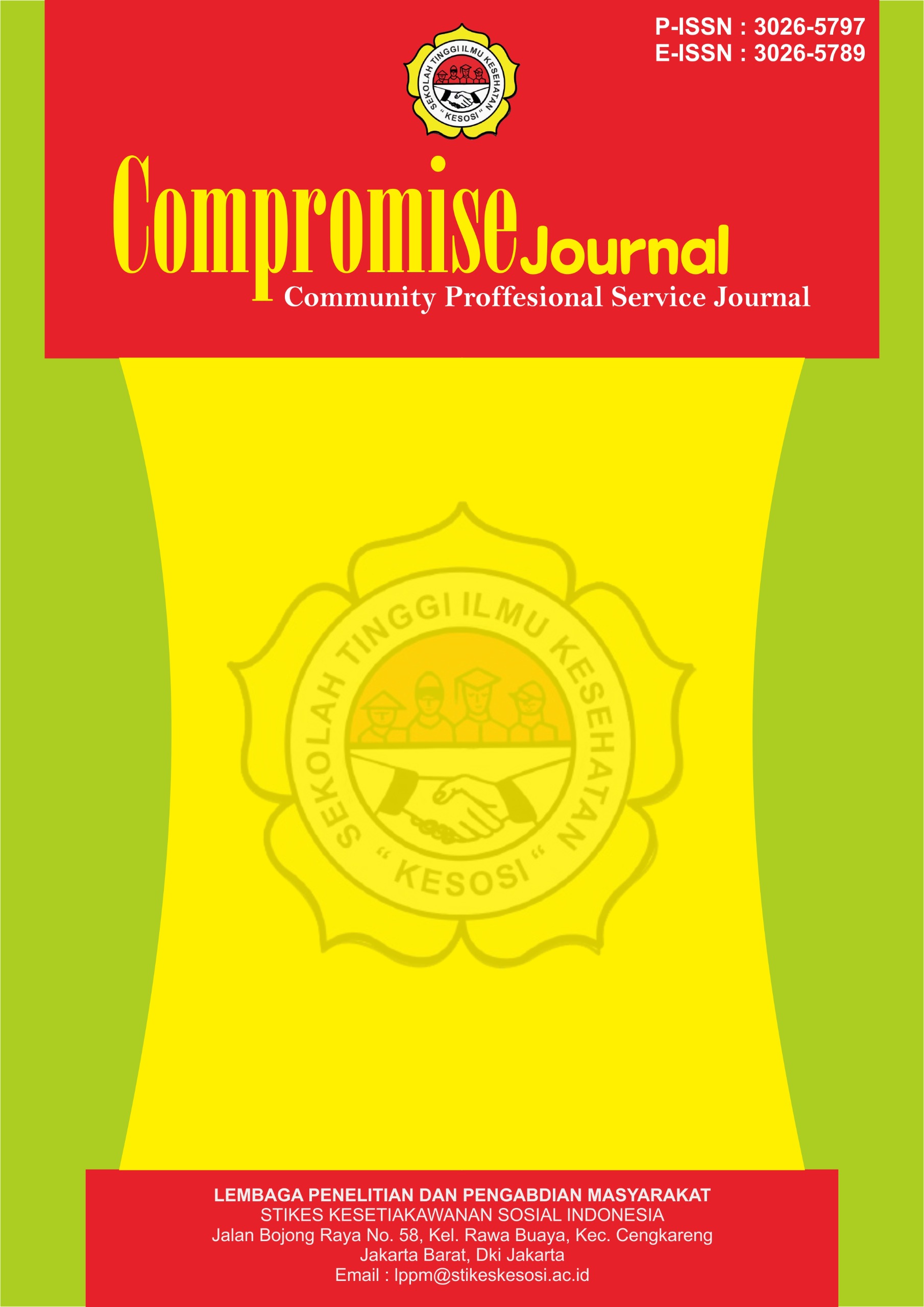Optimalisasi Kualitas Citra CT Scan Kepala Dengan Variasi Rekonstruksi Increment Pada Kasus Stroke Non Hemoragik Di Instalasi Radiologi RSAD TK II Udayana Denpasar
DOI:
https://doi.org/10.57213/compromisejournal.v1i4.33Keywords:
Non-hemorrhagic stroke, CT Scan, IncrementAbstract
Non-hemorrhagic stroke or commonly called ischemic stroke is a functional disorder of the body area due to decreased brain function caused by blockage of cerebral blood vessel flow. One of the modalities in radiology that can diagnose non-hemorrhagic stroke cases is computer tomography (CT). To get good image quality, one of them is by doing increment reconstruction. Increment reconstruction is the distance between reconstruction images in volume data. Increment reconstruction is grouped into three, namely increment overlapping, increment contiguous and increment gap. The type of research used is quantitative research with an experimental approach. The sample of this study used 10 patients who underwent CT scan examination of the head with non-hemorrhagic stroke cases in June-August 2023 in the Radiology Unit of RSAD TK II UDAYANA DENPASAR BALI. The findings of this study indicate that when using different increment reconstruction techniques, anatomical image information will vary. The results of the total Friedman test which shows a p value of 0.000 (<0.05) provide evidence of this. A p value of 0.000 was found (p value <0.05) based on differences in overall anatomical image information, indicating that there is a difference between non-hemorrhagic stroke cases and head CT scans. Of the four variations of increment reconstruction, variation 3 with a reconstruction increment of 2.5 mm has the largest mean rank value (3.23) so it is the most ideal anatomical image information.
References
S. Lia, (2022) “KARAKTERISTIK FAKTOR RISIKO STROKE HEMORAGIK DAN STROKE NON HEMORAGIK DI RSUD KOTA BEKASI,” J. Ilm. Indones. p–ISSN 2541-0849 e-ISSN 2548-1398, vol. 7, no. 8.5.2017. Available: https://www.who.int/news-room/fact-sheets/detail/autism-spectrum-disorders
B. D. Hardika, M. Yuwono, and H. M. Zulkarnain (2020) “Faktor Risiko yang Mempengaruhi Terjadinya Stroke Non Hemoragik pada Pasien di RS RK Charitas dan RS Myria Palembang,” Fakt. Risiko yang Mempengaruhi Terjadinya Stroke Non Hemoragik pada Pasien di RS RK Charitas dan RS Myria Palembang, vol. 9, no. 2, pp. 268–274, 2020, doi: 10.36565/jab.v9i2.234.
S. S. P. Ardi Soesili Wibowo, Bagus Abimanyu (2018) “PERBEDAAN INFORMASI CITRA ANATOMI PADA VARIASI REKONSTRUKSI INCREMENT OVERLAPPING PEMERIKSAAN MSCT SCAN ABDOMEN.
R. J. Salim, I. K. Y. Astina, and I. M. A. Mahendrayana (2022) “OPTIMALISASI CITRA CT SCAN KEPALA MENGGUNAKAN VARIASI REKONTRUKSI INCREMENT DAN BRAIN WINDOW PADA KASUS STROKE HEMORAGIK. doi:https://doi.org/10.32670/ht.v2i2.2806.
B. Abimanyu, R. Polytechnic, and H. Kemenkes (2018) “VARIASI REKONSTRUKSI INCREMENT PEMERIKSAAN CT SCAN THORAK PADA KASUS CA PARU ANALYSIS OF DIFFERENCE TO ANATOMICAL IMAGE INFORMATION WITH INCREMENT RECONSTRUCTION VARIATION IN CT SCAN EXAMINATION OF THORAK IN CASE OF.
C. Applications and Q. Control (2016) “Euclid Seeram COMPUTER TOMOGRAPHY Physical Principles Clinical Applications,and Quality Control.
Fatimah P. Informasi, C. Anatomi, and D. Variasi, (2018) “REKONSTRUKSI INCREMENT PADA PEMERIKSAAN CT SCAN KEPALA PROGRAM STUDI DIPLOMA IV TEKNIK RADIOLOGI.
A. Nabielah and N. Sulaksono (2018) “OPTIMALISASI CITRA CT SCAN KEPALA MENGGUNAKAN VARIASI RECONSTRUCTION INCREMENT PADA KASUS STROKE IMAGE OPTIMIZATION OF HEAD CT SCAN USING.






